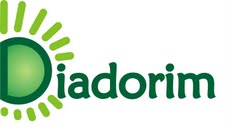WOVEN FABRICS COMPUTATIONAL SIMULATION USING BEAM-TO-BEAM CONTACTS FORMULATION
DOI:
https://doi.org/10.26512/ripe.v2i22.20864Keywords:
Woven fabrics. Computational simulation. Beam to beam contact.Abstract
This paper presents the study of the woven fabric mechanical behavior using computational simulations. For that, the finite element analysis is used, where the woven weft and warps are modeled by three-dimensional beams and the interaction among them are performed by frictionless contact models. Therefore, the methodology for the woven fabrics computational simulation is developed, such as the constitution of these numerical models and computational tests techniques are presented. For it, super elliptical cross sections are considered for warp and weft textile fibers and the beam-to-beam contact formulations are assumed in the problem solution, where parametrized surfaces represent the boundaries of the beams that are candidate to contact. The result of the computational simulations is the possibility to study the textile mechanical behavior, where their properties can be obtained for woven fabrics samples under several load cases.
Downloads
References
meansof finite element analysis, J Text Inst, 82(I), 96”“107.
Durville, D., 2011. Contact Modelling in Entangled Fibrous Materials. In Zavarise, G &
Wriggers, P, eds, Trends in Computational Contact Mechanics, pp. 1- 22. Springer-Verlag.
Durville, D., 2007. Finite element simulation of textile materials at mesoscopic scale. Finite
element modelling of textiles and textile composites, pp. CDROM .
Gay Neto, A., C. A. Martins, & P. M. Pimenta. Static analysis of offshore risers with a
geometrically-exact 3D beam model subjected to unilateral contact. Computational
Mechanics, v. 53, 2014: 125-145.
Gay Neto, A., 2016. Dynamics of offshore risers using a geometrically-exact beam model
with hydrodynamic loads and contact with the seabed. Engineering Structures, v. 125:438-
Gay Neto, A., & C. A. Martins, 2013. Structural stability of flexible lines in catenary
configuration under torsion. Marine Structures, v. 34: 16-40.
Gay Neto, A., P. M. Pimenta, e P. Wriggers., 2014. Contact between rolling beam and flat
surfaces. International Journal for numerical Methods in Engineering, v. 97:683-706.
Gay Neto, A., P. M. Pimenta, e P. Wriggers, 2014. Self-contact modeling on beams
experiencing loop formation. Computational Mechanics, v. 55, 2014: 193-208.
Gay Neto, et. al., 2016. A master-surface to master-surface formulation for beam to beam
contact. Part I: frictionless interaction. Computer Methods in Applied Mechanics and
Engineering.
Gay Neto, A. The Giraffe Project. 2014. http://sites.poli.usp.br/p/alfredo.gay/ (accessed in
July 15th, 2016).
Ghosh, T. K., Batra, S. K. & Barker, R. L., 1990. Bending behaviour of plain-woven fabrics:
a critical review, J Text Inst, 81, 245”“287.
Grishanov, S., Fundamental Modelling of Textile Fibrous Structures. In Chen, X.,2010.
Modelling and Predicting Textile Behavior, CRC Press.
Hearle, J.W.S., Grosberg, P., & S. Baker., 1969. Structural Mechanics of Fibers, Yarns, &
Fabrics, Vol. 1, John Wiley& Sons.
Hearle, J. W. S., Thwaites, J. J. & Amirbayat, J., 1980. Mechanics of Flexible Fiber
Assemblies. NATO Advanced Study Institute Series: E, Applied Sciences No. 38.
Hearle, J. W. S., Konopasek, M. & Newton, A., 1972. On some general features of a
computer-based system for calculation of the mechanics of textile structures, Text Res J, 10,
”“626.
Hearle, J. W. S. & Shanahan, W. J., 1978. An energy method for calculations in fabric
mechanics, Part I: Principles of the method, J Text Inst, 69, 81”“91.
Hu, J., 2004. Structure and mechanics of woven fabrics. Woodhead Publishing.
Hu, J. & Newton, A., 1993. Modelling of tensile stress-strain curves of woven fabrics, J China
Text Univ, 10(4), 49”“61.
implicit time stepping schemes. International Journal for Num. Methods In Engineering., V.
, 781-814, 1998.
Kawabata, S., 1980. Standardization and Analysis of Hand Evaluation. Textile Machinery
Society of Japan.
Morton, W.E. & Hearle, J. W. S., 2008. Physical Properties of Textile Fibers. Woodhead
Publishing
Nilakantan, G., Keefe, M., Bogetti, T., Adkinson, R., Gillespie Jr., J., 2009. On the finite
element analysis of woven impact multiscale modeling techniques. International Journal of
Solid and Structures 47, 2300-2315.
Popov, V.L., 2010. Contact Mechanics and Friction. Springer.
Zavarise, G., Wriggers, P. Trends in Computational Contact Mechanics. Springer, 2011.
Zhang, L., 2010. Reliability Analysis of Fabric Structures. Doctoral Thesis, Newcastle
University.
Downloads
Published
How to Cite
Issue
Section
License
Given the public access policy of the journal, the use of the published texts is free, with the obligation of recognizing the original authorship and the first publication in this journal. The authors of the published contributions are entirely and exclusively responsible for their contents.
1. The authors authorize the publication of the article in this journal.
2. The authors guarantee that the contribution is original, and take full responsibility for its content in case of impugnation by third parties.
3. The authors guarantee that the contribution is not under evaluation in another journal.
4. The authors keep the copyright and convey to the journal the right of first publication, the work being licensed under a Creative Commons Attribution License-BY.
5. The authors are allowed and stimulated to publicize and distribute their work on-line after the publication in the journal.
6. The authors of the approved works authorize the journal to distribute their content, after publication, for reproduction in content indexes, virtual libraries and similars.
7. The editors reserve the right to make adjustments to the text and to adequate the article to the editorial rules of the journal.









